My head's still spinning from this story, and I'm barely (if that) connected to any of it. Those at the center of this art world controversy have got to be feeling something more akin to a horse-kick to the stomach.
Are you familiar with the work of Charles Krafft? An artist from the Pacific Northwest, Krafft was known, among other things, for taking human remains -- cremains -- and turning them into a kind of porcelain art. For two decades or more Krafft has managed to be a living legend in Seattle and an iconoclast bad boy who mocked the art world even as he profited from it.
Among Krafft's work is "Disasterware," a series of ceramic plates that derided the sort of sentimental plates your taste-deficient grandmother might display on the walls of her kitchen. Instead of pastoral scenes and calm vistas, "Disasterware" included imagery of Nazis and other violent, disturbing images.
In another series, "Forgiveness," Krafft made replica soap and perfume bottles inlaid with Nazi swastikas.
The idea driving this kind of art, it was agreed, was that Krafft was a provocateur taking on some of the most difficult themes in art -- death, violence, Nazis, and the Holocaust -- with a sly, shifting lens of irony, scorn, and humor. This is all well and good in a post-modern way, but to make this kind of art has always meant that Krafft's acceptance as an artist rested on the belief that he held personal political views that were generally in line with the rest of the art world, i.e. anti-fascist and liberally tolerant. No one ever considered the possibility that Krafft's more controversial works of art were in any way, well, sincere.
That all changed this week when Jen Graves, a staff writer at The Stranger in Seattle, revealed Krafft's awful secret: He is an admitted White Nationalist and a Holocaust denier:
On July 28, 2012, he participated (not for the first time) in a podcast produced by the white nationalist website The White Network, whose tagline is 'Whites Talking to Whites About White Interests.' According to The White Network's "about" page, "We recognize that different races and ethnic groups cannot live together in peace on the same soil, that Whites cannot and should not tolerate being governed by non-Whites." The description goes on to say: "Jews are not White. They are obsessed with their own group's best interests, not ours. Our network is and will always remain by, for, and about the best interests of Whites, and only Whites. We are uncompromising on this point. We do not hesitate to identify and criticize Jews and will not allow them to hide amongst us."
"On the podcast, Krafft says, "I believe the Holocaust is a myth," and that the myth is "being used to promote multiculturalism and globalism.""
I quote Graves at length because she, in fact, bothered to google Krafft when others did not. Headline aside, her story in The Stranger, a publication which sees itself as iconoclastic in its own way, treats the Krafft revelations with meticulous care; we thought Krafft was one of us, her story's subtext reads, but we are heartbroken to learn that he is most definitely not.
Consider the truly troubling anecdote at the heart of Graves' story, that of the Jewish collector who bought an eerie bust of Hitler that Krafft had made, fully believing that Krafft's message in the bust was an anti-fascist one. The collector died before ever learning of Krafft's real views, but Graves was assured by Timothy Burgard, a curator in San Francisco, that, had the collector known of Krafft's warped ideology, "he'd probably have smashed it."
No kidding. I might sardonically laugh to myself at the idea of some shallow, profiteering art collector who bought this art thinking it was a hot property, only to fret about that investment evaporating with these scandalous revelations. But I have a really hard time feeling anything but sympathy, sadness, and anger for the Jewish collector who was conned; I feel that way even though the man didn't live long enough to learn that he was actually the butt of a very sadistic joke.
As I said, my own connection to all of this is tangential at best, but when I was living in Seattle I was sorely tempted to buy one of Krafft's porcelain hand grenades. Those hand grenades, mostly white with some delicate blue floral images on them, are beautiful in their own right, and I was convinced that Krafft's was provocatively suggesting through the grenades that we as a species are so violent that our minds can be tricked into believing that something so violent could be made beautiful. The violence can be found in the very dust of our cremains (he also makes, surprise, porcelain Lugers, a handgun favored by Germans during World War II).
Now, having learned of his views on the Holocaust and his thoughts on Aryan supremacy, what do those grenades really mean? I shudder at the implications, and in retrospect am very glad that I spent my money on books instead.
In 2003 I attended the opening of a performance-exhibition of Krafft's. I was with my wife Emily Hall, who was writing an arts piece about it for The Stranger. Instead of the usual art gallery, the show was held at a columbarium in Seattle's Mount Pleasant Cemetery. No Nazi symbols were on display, nothing so polarizing or so cruel. Krafft instead brought out his sense of humor and irony with objects like a cremains bulldog and a cremains bottle of Absolut -- to quote Hall, the Absolut bottle was "created for and of someone who died of liver disease (a commission, it turns out, from his friends)."
A former Catholic, I was at once delighted and moved by the strangely irreverent reverence in Krafft's art that day in the cemetery. I think everyone else who attended the opening that afternoon was. For me, Krafft had thrown open a door to the liberating idea that death didn't have to be so stuffy or so ceremonial. Death just is, so why not have some fun with it?
I'm trying to write an ending to this post, and I just can't. I can't make sense of any of it. We should be able to judge art apart from the personal politics of the artist, but Krafft's work doesn't allow for that, especially when he worked with human remains to make art. We literally trusted him with our bodies, and the idea that his intentions about all of it -- the entire corpus -- were not entirely pure corrupts everything, past the ashes of our bones and into our very souls.
